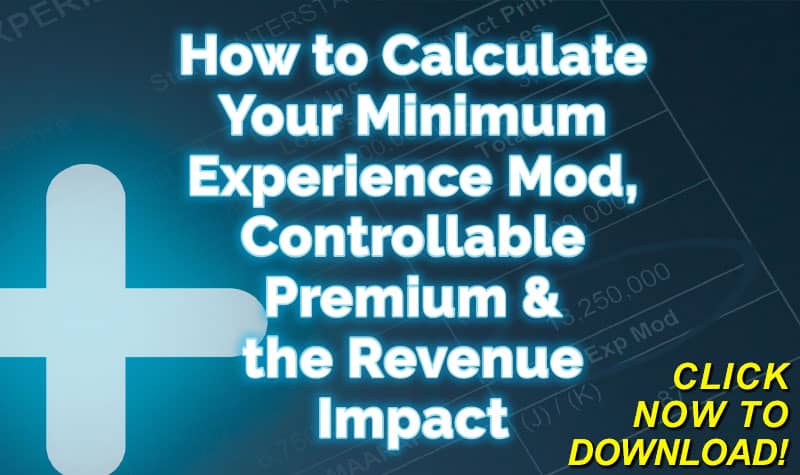Before you go shopping for a workers’ compensation insurance policy you need to put together all the paperwork you will need. Keep this information in one place and use an Excel spreadsheet (if possible). The spreadsheet will be a useful tool down the line when you want to calculate rates and premiums.
1. Payroll Reports
Payroll reports showing how much employees are paid and classification codes are used to calculate premiums. Include work site locations and specify if the type of work done varies from location to location.
2. Classification Codes
Call your state insurance commission to obtain a list of classification codes used to determine workers’ comp rates for various industries. Find the rates that apply to your industry, as it is the rate driving your premium to a large extent. Rates vary depending on the kind of industry – i.e., manufacturing rates differ from office industry rates. If you already have a workers’ comp policy, you can use the codes you have, otherwise, bring written job descriptions to help your agent or broker assign the most accurate code possible.
3. Who is Covered and Who is Not
Determine who is and who is not covered by workers’ comp so you get the most accurate coverage. Contact the department of labor or the state department of workers’ compensation for this information. Sometimes very small businesses aren’t required to pay workers’ comp if they have less than 3–5 employees. You should know this before you make any purchases.
4. Accident Reports for past several years.
Compile accident reports for several past years. Include all current workers’ compensation activity to date – outstanding claims, people out on comp, types of injuries and outcomes.
5. Number of Covered Employees
There are cases when certain employees are not eligible for workers’ compensation coverage. Contact your state workers’ compensation commission to obtain this information.
6. Breakdown of Covered Workers by Job Classification
Includes the owner, full and part time employees, contractors, consultants.
7. Breakdown by Job Type
Includes manufacturing, construction, service industry, sales, office/clerical.
8. Locations of Work Sites
Be sure to break down the job type and classification by location. For example, if you have sales and office workers in one site, and manufacturing in another, be sure to differentiate as it can make a big difference in your premiums.
9. Type of coverage You Need
Do you require on-going coverage, one-time coverage for an event, or seasonal coverage.
10. How Long in Business
Know the number of years your company has been in business.
11. Name of Current WC Provider
Be sure to include contact information.
12. Workers’ Comp Claims Activity
Number and type of workers’ comp claims filed against you in the past five years.
13. Value of Claims to Date
Include the face value and wait to see if your agent talks about sales required to pay for claims. The real cost of claims lies in a company’s bottom line and that company’s ability to secure a profit in the face of outstanding claims costs
14. Estimated Effective Date
Ranging from now to when the current policy expires.
15. Last year’s gross payroll amount
16. Legal Entity of the Business
Is it a corporation, limited partnership, proprietorship, etc.
17. Type of Industry
Manufacturing, construction, etc.
18. Sales and Marketing Trends
These may be helpful in advising the insurer as to whether your company is moving in a profitable direction or not. (workersxzcompxzkit)
By preparing all needed information ahead of time and using a spreadsheet, your ability to shop for the best workers’ compensation policy is greatly enhanced. Using a spreadsheet also allows you to update and make notes while you are “interviewing” agents for comparison later.
Author Robert Elliott, executive vice president, Amaxx Risks Solutions, Inc. has worked successfully for 20 years with many industries to reduce Workers' Compensation costs, including airlines, health care, manufacturing, printing/publishing, pharmaceuticals, retail, hospitality and manufacturing. He can be contacted at: Robert_Elliott@ReduceYourWorkersComp.com or 860-553-6604.
Podcast/Webcast: How To Prevent Fraudulent Workers' Compensation Claims Click Here http://www.workerscompkit.com/gallagher/podcast
/Fraudulent_Workers_Compensation_Claims/index.php
FREE WC IQ Test: http://www.workerscompkit.com/intro/
WC Books: http://www.reduceyourworkerscomp.com/workers-comp-books-manuals.php
TD Calculator: www.reduceyourworkerscomp.com/transitional-duty-cost-calculator.php
WC Books: http://www.reduceyourworkerscomp.com/workers-comp-books-manuals.php
TD Calculator: www.reduceyourworkerscomp.com/transitional-duty-cost-calculator.php
Do not use this information without independent verification. All state laws vary. You should consult with your insurance broker or agent about workers' comp issues.
©2009 Amaxx Risk Solutions, Inc. All rights reserved under International Copyright Law. If you would like permission to reprint this material, contact Info@WorkersCompKit.com
















